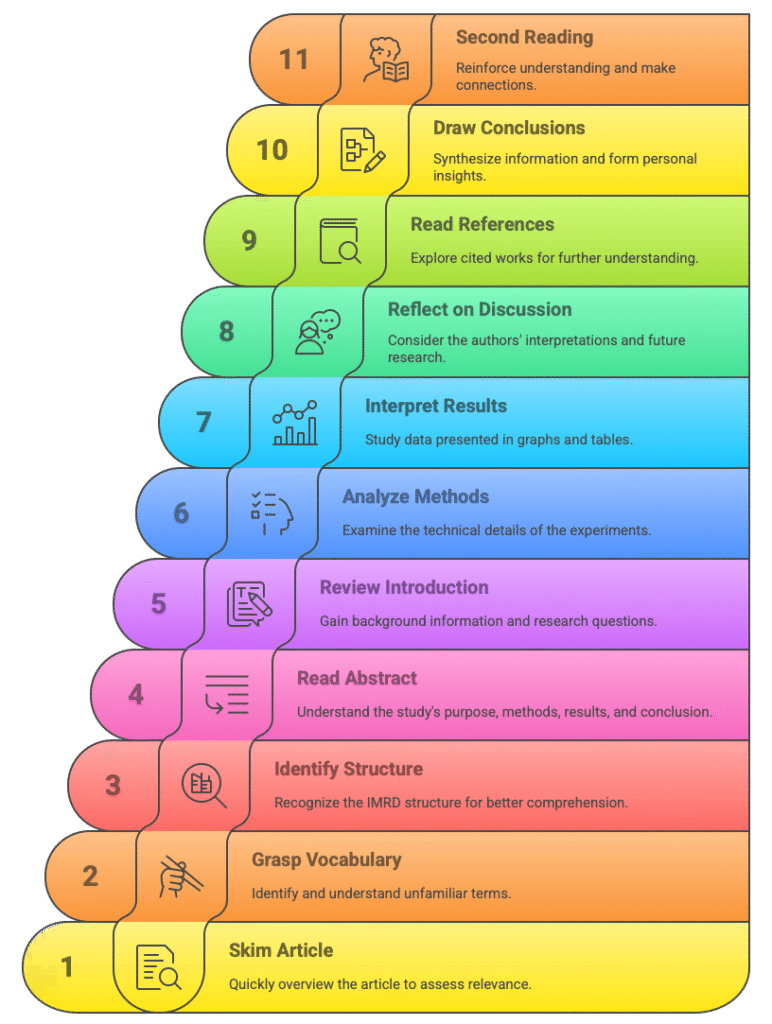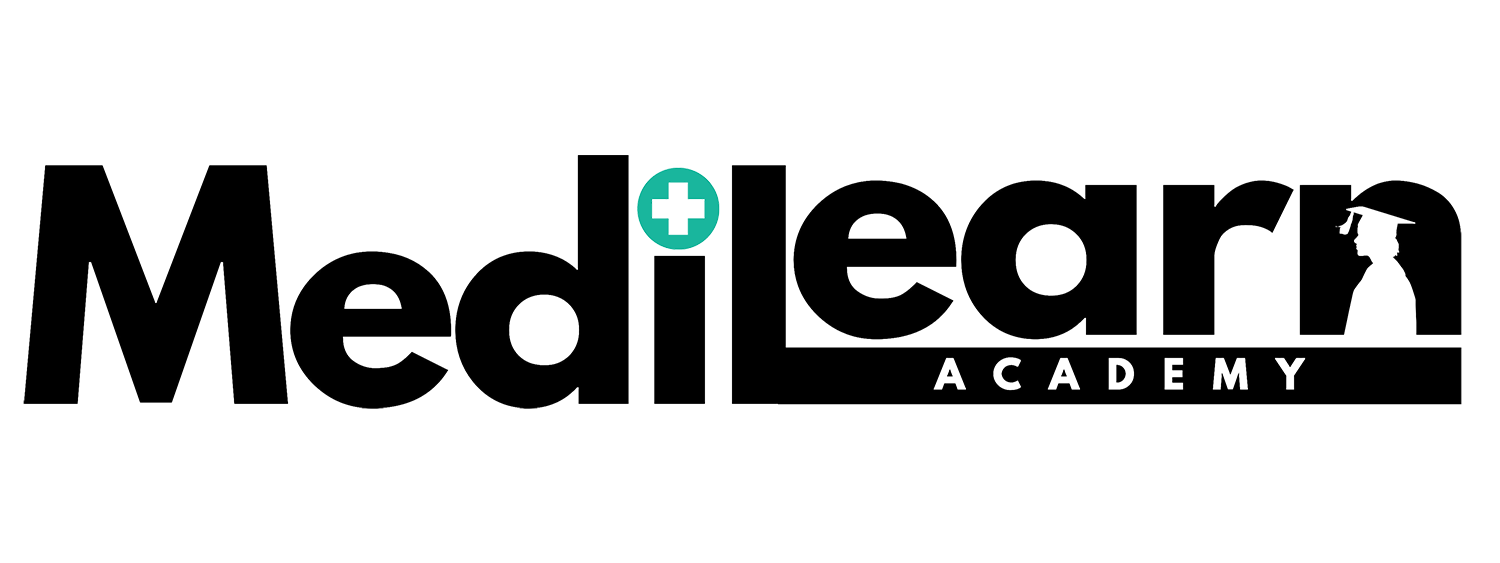Currently Empty: ৳ 0.00
Research
A Step-by-Step Guide to Mastering Scientific Article Comprehension

Reading a scientific or scholarly research article for the first time can feel overwhelming. The complex structure, technical jargon, and dense data may discourage even the most curious readers. But scientific articles aren’t meant to be read like textbooks—from beginning to end in a single pass. Instead, using a structured, strategic approach can help you unlock their full value.
Below is a step-by-step guide that mirrors the natural progression of comprehension, based on the proven “Mastering Scientific Article Comprehension” flow.

1. Skim the Article
Start with a quick scan to get a general idea of what the article is about. This should only take a few minutes. Look at the title, headings, figures, and conclusion or discussion sections. You are not aiming to understand everything yet—just determine whether this article is relevant to your interests or research topic.
Tip: You don’t need to read the article in order—jump ahead to the discussion or conclusion first if needed.
2. Grasp Vocabulary
As you go through the article, highlight unfamiliar terms or technical language. Try to infer the meaning from context or consult medical/scientific dictionaries. Building this vocabulary foundation will improve comprehension and make the rest of the article more accessible.
Subject-specific dictionaries and online resources from academic libraries can be very helpful here.
3. Identify Structure
Recognize the IMRD structure—Introduction, Methods, Results, Discussion—to guide your reading.
Most journals use an IMRD structure: an abstract followed by Introduction, Methods, Results, and Discussion. These sections typically contain conventional features, which you will start to recognize. If you learn to look for these features you will begin to read and comprehend the article more quickly.
Here’s what to expect in each section:
- Introduction: Offers background and presents the research question.
- Methods: Describes experimental design and data collection techniques.
- Results: Presents data objectively—through graphs, tables, and statistics.
- Discussion: Interprets the findings, discusses implications, and suggests future directions.
Understanding this structure helps you locate specific information quickly and makes the reading process more strategic.
4. Read the Abstract
The abstract is a compact summary that typically includes:
- The purpose of the study (Why?)
- The methodology used (How?)
- The results (What was found?)
- The conclusion (What does it mean?)
Start here to confirm the article is worth your time and effort.
5. Review the Introduction
The introduction provides background on the research problem and outlines the objectives or hypotheses. This section helps you place the study in context and understand what specific question the researchers aim to answer.
If you’re already familiar with the topic, a quick skim may suffice.
6. Analyze the Methods
This section provides the technical details of how the study was carried out. It can act as a “how-to” manual for replicating the research. Depending on your needs, you may choose to read it deeply or just get a general understanding of the study design.
Key for assessing the study’s reliability and reproducibility.
7. Interpret the Results
This is where the authors present what they discovered, often using charts, graphs, and tables. Take your time to carefully study these visual elements—this is where the bulk of the actual data lies.
Remember: No interpretation is done here—only raw findings are shared.
8. Reflect on the Discussion
In the discussion, the authors interpret their results. They may compare them with previous studies, highlight implications, and address limitations. This section also often includes suggestions for future research.
Be critical—these are the authors’ interpretations, not absolute facts.
9. Read the References
The references section is a goldmine of further reading. It can help you:
- Discover foundational or related articles
- Identify key researchers in the field
- Clarify unfamiliar concepts or terminology
Exploring citations can deepen your understanding and guide your literature review.
10. Draw Conclusions
Now that you’ve absorbed the main content, synthesize your understanding. Reflect and ask yourself:
- Have I grasped all key concepts and terms?
- How does this research connect to my own interests?
- Are there limitations or biases I should be aware of?
- What unanswered questions remain?
Taking notes and jotting down questions at this stage will help clarify your personal insights and inform future reading.
11. Second Reading
Finally, re-read the article in full, preferably in chronological order. A second, more relaxed pass-through helps reinforce your understanding, correct any misinterpretations, and draw connections with other research you’ve read.
With each revisit, your comprehension and retention will improve dramatically.
Scientific articles are not meant to be consumed in one sitting or in a linear fashion. By approaching them with a methodical strategy—skimming first, mastering vocabulary, identifying structure, and diving into sections with purpose—you’ll gain clarity, confidence, and competence in interpreting academic literature.

